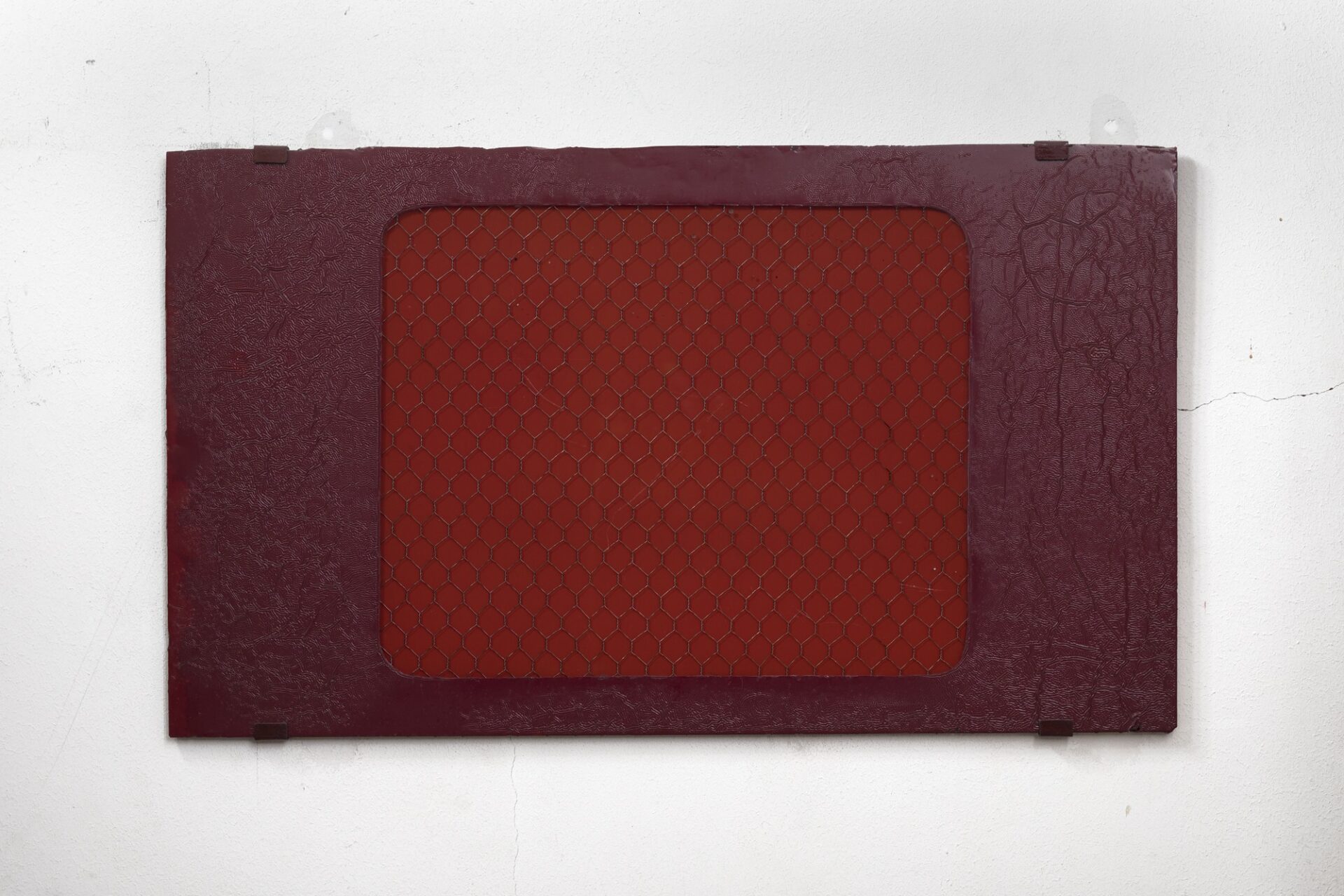Donald Judd incorporated found objects into a number of his early works, as well as in some of his later works, such as untitled, 1992. In another work from 1961, now in the collection of the Museum of Modern Art, New York, Judd inset a tinned steel baking pan into the black-painted composition board and wood surface of the work, giving the piece a real, not illusory, depth.
In 1973, Douglas Crimp wrote of this piece, “Particularly interesting is a painting . . . by Judd . . . consisting of dark red enamel applied to . . . a piece of wire-reinforced glass. On the side facing away from the wall, the paint frames an area of clear glass the shape of a TV screen revealing the wire and the ‘back’ of the other paint surface. Both the will to objecthood and the reasons why Judd was to finally reject painting as always suggesting some kind of illusion are apparent in this eccentric work.”1
